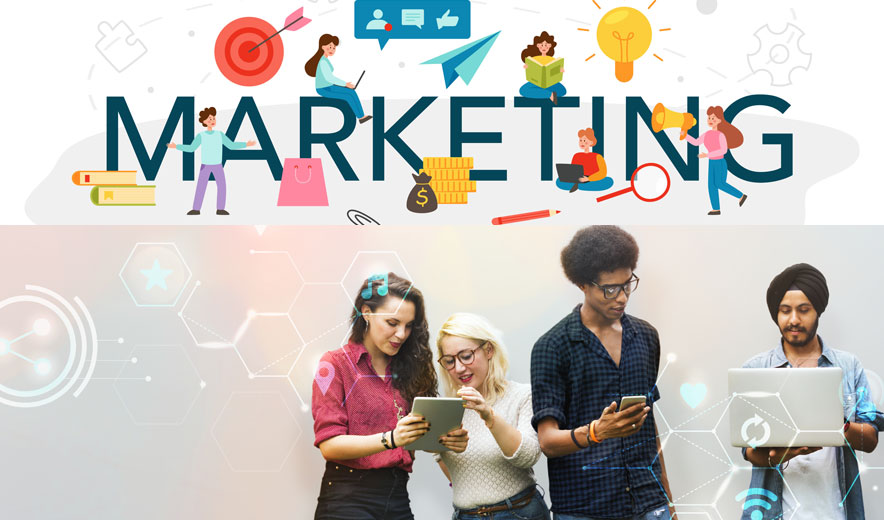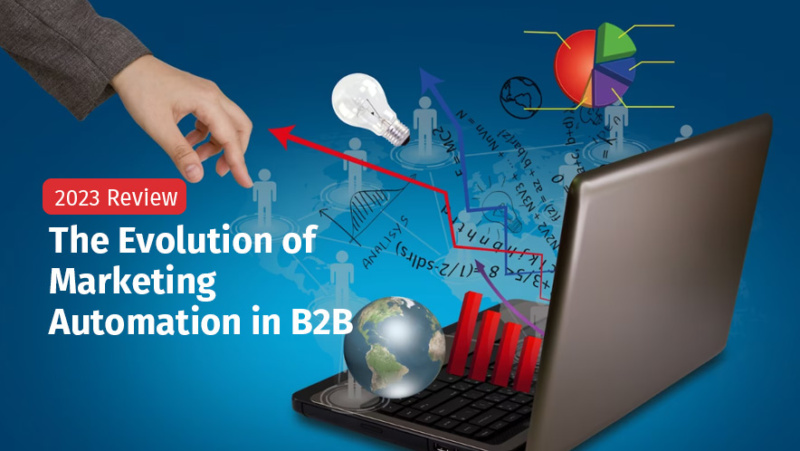Integration of AI and machine learning in personalizing B2B marketing strategies
The integration of Artificial Intelligence (AI) and machine learning (ML) into Business-to-Business (B2B) marketing strategies has become a pivotal aspect of modern business practices. This amalgamation offers businesses the capability to enhance the personalization of their marketing efforts, thereby engaging potential clients in a more precise and effective manner.
Tools and Features of AI in B2B Marketing
Customer Segmentation: One significant application of AI in B2B marketing is the segmentation of customers. AI analyzes extensive datasets to identify patterns and categorize B2B customers based on behaviors, preferences, and demographics. This dynamic segmentation helps optimize marketing strategies to customer behaviors over time.
Predictive analytics: This is another powerful tool that AI brings to B2B marketing personalization. By leveraging machine learning algorithms, users can scrutinize historical data and anticipate future customer behaviors. This helps marketers stay ahead with a more targeted and effective approach to meet clients’ needs effectively
Content personalization: AI algorithms analyze past interactions to suggest content that matches the specific interests of B2B customers These algorithms can suggest and deliver content that creates a more engaging and personalized experience.
Recommendation engines: Similar to Netflix, recommendation engines in B2B marketing suggest relevant products, services, or content based on individual customer interactions. This helps in guiding potential clients towards offerings that align with their preferences and needs, enhancing the overall customer experience.
Lead scoring: This is a critical component of B2B marketing tools which uses AI and machine learning. These technologies assign scores to leads based on their likelihood to convert, allowing sales teams to focus their efforts on leads with higher conversion potential, thereby optimizing resource allocation.
Chatbots and Virtual Assistants: AI-powered chatbots and virtual assistants offer These virtual assistants learn from each interaction to offer increasingly personalized responses that improve customer engagement and streamline the sales process.
Dynamic pricing: Another application of AI in B2B marketing is dynamic pricing which analyzes market conditions, competitor pricing, and customer behavior to adjust pricing strategies dynamically. This allows businesses to offer personalized pricing based on individual customer relationships and historical data.
Behavioral analysis: Powered by AI tools, this helps track the digital footprint of B2B customers to understand customer preferences and optimize marketing strategies to deliver a more personalized and targeted approach.
Email marketing optimization: AI-powered email automation enables the personalization of content, subject lines, and sending times based on individual recipient behavior. This level of customization increases the likelihood of engagement and conversions in email campaigns.
The integration of AI and machine learning into B2B marketing strategies signifies a paradigm shift from traditional, generic approaches. Leveraging data-driven insights, businesses can deliver more targeted and relevant experiences to their B2B clients. This leads to higher engagement, conversion rates, and increased customer satisfaction in the highly competitive B2B landscape.
Emphasis on Sustainability and Socially Responsible Marketing Practices
In today’s world, consumers care more than ever about sustainability and ethics. That’s why businesses must focus on sustainable marketing and socially responsible practices. This aligns with ethical standards and helps meet the increasing demand for eco-friendly and socially conscious products and services.
Promoting Eco-Friendly Practices
- Reduce Carbon Footprints: Show how your business is cutting emissions and being environmentally friendly.
- Use Renewable Resources: Highlight your use of renewable materials and resources.
- Eco-Conscious Manufacturing: Let customers know about your environmentally conscious manufacturing processes.
Ethical Business and Community Engagement
- Fair Labor Practices: Ensure fair treatment of workers and ethical sourcing of materials.
- Local Community Contributions: Engage with local communities and contribute positively to them.
Sustainable Packaging
- Minimalistic Packaging: Use minimal and eco-friendly packaging that reduces environmental impact.
- Appealing to Eco-Conscious Consumers: Showcase your eco-friendly packaging to attract environmentally-conscious consumers.
Collaboration and Social Impact
- Partnering with Nonprofits: Collaborate with nonprofits and engage in social impact initiatives.
- Amplifying Impact: Use marketing channels to raise awareness and encourage consumer participation in social causes.
The Power of Storytelling
- Brand’s Sustainability Journey: Share stories about your journey toward sustainability and ethical practices.
- Positive Impact on Communities: Highlight the positive impact your business has on communities.
Educational Campaigns
- Raising Awareness: Educate consumers about the environmental and social impacts of their choices.
- Empowering Consumers: Provide information to empower consumers to make responsible decisions.
Why It Matters
- Attracting Socially Conscious Consumers: Businesses that prioritize sustainability and ethics appeal to socially conscious consumers.
- Building Brand Loyalty: Focusing on these values helps build brand loyalty and trust.
- Contributing to a Better World: By adopting sustainable and socially responsible practices, businesses contribute to a better, more responsible world.
By incorporating these sustainable marketing and socially responsible practices into your business strategy, you not only do the right thing but also set yourself up for success in a world where consumers increasingly care about ethical and eco-friendly choices.
Increased reliance on interactive and immersive content formats
The digital world is changing fast, and more and more people are into interactive and immersive content. This means a heightened audience engagement and active participation and experience. Various interactive and immersive formats, such as augmented reality (AR), virtual reality (VR), interactive videos, quizzes, and polls, have emerged as powerful tools to captivate audiences and enhance the overall user experience.
Let’s break down how different kinds of interactive content are changing the game:.
Augmented Reality (AR) and Virtual Reality (VR) are changing content consumption by offering immersive, three-dimensional experiences. Marketers are leveraging these technologies to create interactive product demonstrations, virtual tours, and engaging brand experiences. This enhances user engagement by creating a more personalized and memorable interaction with content.
Interactive videos help content creators increase viewer engagement. These videos enable viewers to make choices within the narrative, influencing the direction of the story or accessing additional product information. The interactive storytelling approach is transforming passive viewers into active participants, by creating a more dynamic and personalized experience for them.
Quizzes and polls integrate interactive elements into content to encourage audience participation and feedback. Marketers can ask users to share their opinions, preferences, or knowledge. This provides valuable data for personalized content recommendations and fosters a sense of interactivity and community engagement.
Live streaming is another form of interactive content that offers real-time interactions between content creators and their audiences with live video content. Viewers can comment, ask questions, and receive immediate responses, creating a sense of connection and community engagement.
Gamification integrates game-like elements into non-game contexts that enhance interactivity. By incorporating elements such as points, rewards, and challenges, marketers can make content more engaging and motivate users to actively participate and return for more.
Personalization is a key component of the interactive and immersive content trend. Tailoring content based on user preferences, behaviors, and interactions creates a more individualized experience. Marketers can use interactive elements like personalized recommendations, adaptive learning paths, and dynamically changing content based on user choices.
Interactive and immersive content formats are enabling content creators to create a more engaging digital experience and foster meaningful connections. By embracing interactive technologies and strategies, they can create content that actively involves and resonates with their target audience which results in higher levels of engagement and satisfaction.
In a Nutshell
B2B marketing is changing in the digital age. AI and machine learning are transforming how businesses market their products. They help companies personalize marketing with advanced analytics and insights. Also, companies are focusing more on sustainability and ethical marketing to connect with consumers who care about these issues. This helps build trust and credibility with customers.
Be a part of our MarTech Pulse Community for free and access the best resources, trends, and new technologies from peers and industry experts. You can also check out our other awesome blogs over here.





